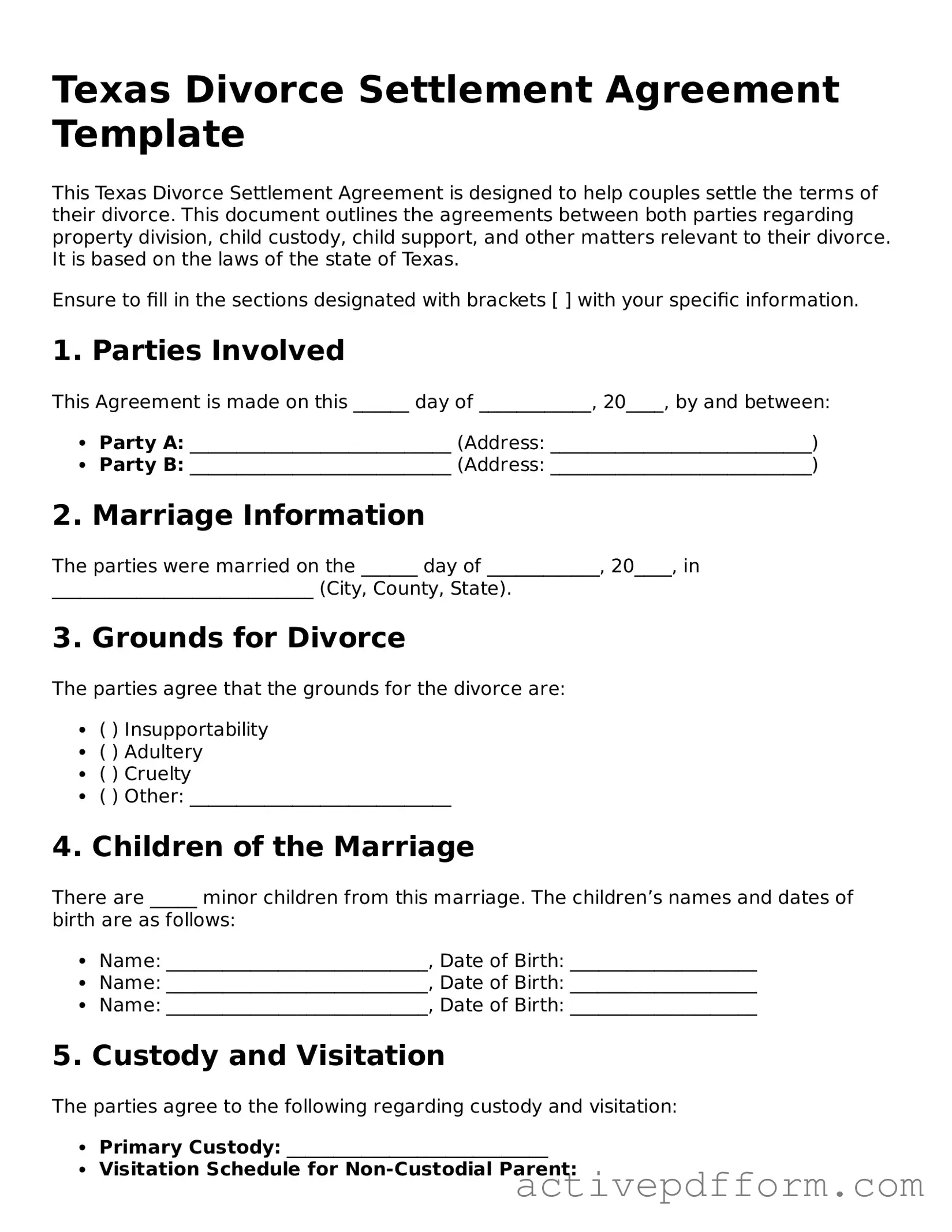Texas Divorce Settlement Agreement Template
This Texas Divorce Settlement Agreement is designed to help couples settle the terms of their divorce. This document outlines the agreements between both parties regarding property division, child custody, child support, and other matters relevant to their divorce. It is based on the laws of the state of Texas.
Ensure to fill in the sections designated with brackets [ ] with your specific information.
1. Parties Involved
This Agreement is made on this ______ day of ____________, 20____, by and between:
- Party A: ____________________________ (Address: ____________________________)
- Party B: ____________________________ (Address: ____________________________)
2. Marriage Information
The parties were married on the ______ day of ____________, 20____, in ____________________________ (City, County, State).
3. Grounds for Divorce
The parties agree that the grounds for the divorce are:
- ( ) Insupportability
- ( ) Adultery
- ( ) Cruelty
- ( ) Other: ____________________________
4. Children of the Marriage
There are _____ minor children from this marriage. The children’s names and dates of birth are as follows:
- Name: ____________________________, Date of Birth: ____________________
- Name: ____________________________, Date of Birth: ____________________
- Name: ____________________________, Date of Birth: ____________________
5. Custody and Visitation
The parties agree to the following regarding custody and visitation:
- Primary Custody: ____________________________
- Visitation Schedule for Non-Custodial Parent:
- Weekdays: ____________________________
- Weekends: ____________________________
6. Child Support
Both parties agree to the terms of child support:
- Party A shall pay $____________ per month to Party B.
- Child support payments will start on ____________ and continue until the child reaches age 18 or graduates from high school.
7. Division of Property
The parties agree to distribute their property according to the following terms:
- Party A retains:
- ____________________________
- Party B retains:
- ____________________________
8. Debts and Liabilities
The parties agree on the distribution of debts as follows:
- Party A shall pay: ____________________________
- Party B shall pay: ____________________________
9. Miscellaneous Provisions
Any additional agreements or provisions may be included here:
_______________________________________________________________________________________
10. Signatures
The undersigned parties hereby agree to the terms and conditions of this Texas Divorce Settlement Agreement.
____________________________
Party A Signature
Date: _____________________
____________________________
Party B Signature
Date: _____________________
This document represents the entire agreement between the parties concerning the divorce and supersedes any prior discussions or agreements.
